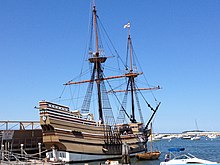 |
| Death certificate from December 8, 1915 |
Rachel didn't leave much of a paper trail, and what she left was filled with strange clues.
Rachel Was a First-Time Mother at Age 11?
Only once can I find Rachel enumerated in a census with her family. The US Census of 1900 listed Rachel as "mother-in-law" in the household of Meyer Mahler, who married Rachel's daughter Tillie. Tillie and Meyer (my paternal great-grandparents) had 7 children, so there were 10 people crowded into this apartment at 88 Chrystie Street on the Lower East Side, where many immigrants lived. In fact, Rachel's son Joseph lived in the apartment next door.
Supposedly Rachel was born in February of 1849 and was therefore 51 at the time of this Census. Yet Rachel's daughter Tillie was supposedly born in August of 1860, when her mother would have been 11 years old. No wonder I'm a bit skeptical of the accuracy of this Census data.
Rachel Died in Bellevue Hospital
There was a different age estimate on Rachel's death certificate (excerpt shown above). She died in Bellevue Hospital in New York City on December 8, 1915, at about age 70. I say "about" because there is no birth date on the certificate. If she was 70 in 1915, her birth year would be about 1845.
Causes of death were numerous, including chronic liver problems, chronic heart problems, and double hydrothorax ("water on the lungs"--often associated with liver and heart problems). The cert says that her former or usual residence was 47 Allen Street in Manhattan. That's also on the Lower East Side, just three blocks from where she was living 15 years earlier. Both apartments are a very short walk from today's Tenement Museum.
In the Hospital with Jane Doe and John Doe
Where was great-great-grandma Rachel between 1900 and 1915? She was not living with her son or daughter. I triple-checked. No New York City directory listings seem to fit my Rachel. She didn't die until the end of 1915, so where was she living for 15 years?
Possibly Rachel's chronic health problems, listed on her death cert, are important as clues to this mystery. I twice found a Rachel Jacobs as a patient at Manhattan State Hospital at Ward's Island in Manhattan. This institution was originally designated as an insane asylum for immigrants, but it also housed some medical patients.
In 1905, the Rachel Jacobs in this hospital is listed as 60 years old, meaning a birth year of 1845. In 1910, the Rachel Jacobs in this hospital is listed as 61, meaning a birth year of 1849. Both times, Rachel is listed as from Austria, which wasn't the case.
All the info came from the hospital administration--that's clear because patients are listed in strict alphabetical order. Despite the inconsistencies, these two Census records are probably for my great-great-grandma.
Sadly, in browsing through the records for the Manhattan State Hospital, I saw not one but three Jane Doe listings and not one but three John Doe listings, as shown in the excerpt above. Several were listed as "unknown" nativity. One John Doe has no age even guesstimated.
Although I'll never know the truth, I imagine that great-great-grandma Rachel's health kept deteriorating and the family couldn't afford treatment or palliative care. That's most likely how she wound up in a big NYC public asylum/hospital with Jane Does and John Does. Rachel's son was in poor health himself, and died of Parkinson's disease only three years after his mother died.



































